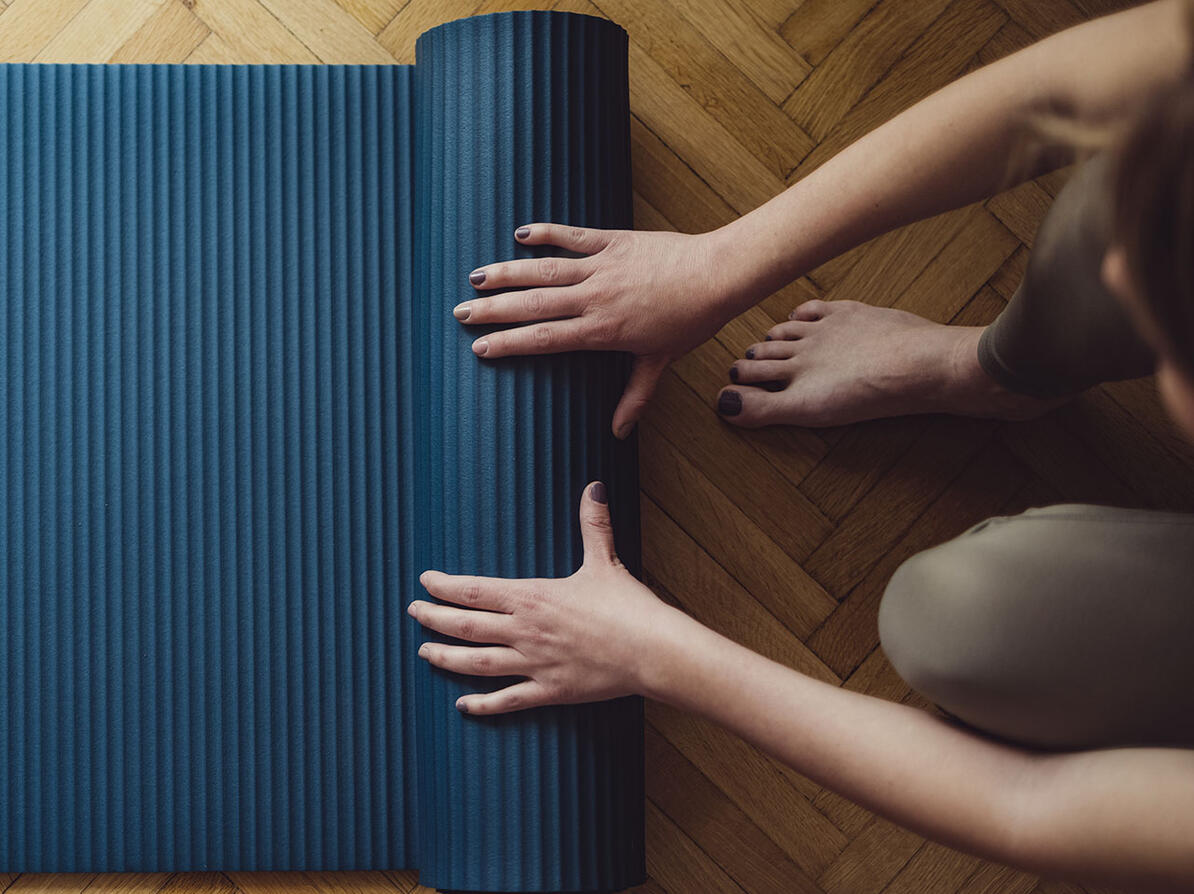Test: Chemicals in yoga mats
Your yoga mat may contain problematic chemicals that you are in contact with during your yoga exercises. See which yoga mats are free of unwanted chemicals.

When you practice yoga, you are in contact with your yoga mat for a long time. Therefore, your mat should preferably be free of, for example, suspected carcinogens.
The Danish Consumer Council THINK Chemicals has tested a selection of yoga mats on the Danish market. The tested yoga mats are either made of plastic or natural rubber.
6 yoga mats are good choices in the test. They are either completely or largely free of the unwanted substances we have tested.
Naphthalene found in several yoga mats
Several yoga mats contain the PAH naphthalene, which is classified in the EU as a possible carcinogen and which we find in many different products.
Three yoga mats therefore get the worst chemical rating C, due to the content of naphthalene.
The drug is legal and the yoga mats are not a problem in themselves. However, they can contribute to our overall exposure to problematic substances.
Natural rubber with unwanted chemicals
Natural rubber can release nitrosamines and nitrosatable substances. These substances can develop during the production of natural rubber.
Nitrosamines are carcinogenic and the nitrosatable substances can convert to carcinogenic nitrosamines.
Certain natural rubber products have limit values such as balloons and pacifiers that children suck on directly. However, for other natural rubber products - such as yoga mats - there are no rules.
One yoga mat in the test of natural rubber is from the brand Manduka eKO. This mat releases a nitrosureable substance in quantities far above the requirement for balloons and above what applies to products with the textile brand Oeko-Tex Tiltro for textiles. This yoga mat therefore gets a C-rating.
Yoga mats with smell
Yoga mats can smell a lot, even if they do not contain problematic chemicals. This also applies to yoga mats made of natural rubber, which can have a characteristic smell of rubber.
It can be unpleasant, but the smell will typically subside over time. One solution might be to let them steam for a while before use. Preferably a place with good ventilation.
About the test
-
How we did
The Consumer Council THINK Chemicals has tested 14 yoga mats made of natural rubber and plastic.
We have purchased the yoga mats sent them to a chemical laboratory that has examined for the content of a number of problematic substances.
Plastic yoga mats are among other things examined for the content of:
- PAHs
- Phthalates
- Flame retardants
- Phenol and bisphenol A
Yoga mats made of natural rubber are among other things examined for the submission of:
- Nitrosamines
- Nitroseable substances
What we found
Overall result:
- Six yoga mats get the best Chemicals rating A. They are free of or largely free of the unwanted chemicals that have been tested for.
- Four yoga mats get a medium Chemicals rating, the B-flask. They contain minor amounts of problematic chemicals in the form of PAHs.
- Four yoga mats get the lowest Chemicals rating, the C-flask. A yoga mat made of natural rubber contains higher amounts of nitrosatable substances. The other three contain a certain amount of naphthalene are suspected to be carcinogenic.
The substances found are in all cases permitted in yoga mats.
We did not find significant content of flame-retardants, phthalates or PAHs.
Nitroseable substances
The test shows that one of the natural rubber mats, Manduka Eko, releases nitrosatable substances that can be converted into carcinogenic nitrosamines.
There are no rules for nitrosamines and nitrosatable substances in products such as yoga mats.
However, the release of nitrosable substances from the yoga mat is far above which is allowed released from products such as pacifiers and balloons to avoid children being exposed to the unwanted substances.
The voluntary textile brand Oeko-tex Tiltro sets requirements for nitrosatable substances in textiles for both children and adults. The finding of nitrosatable substances in the tested yoga mat is also far above the Oeko-tex requirements
PAHs
We have found quite a few PAHs in the yoga mats we have studied.
In some cases, however, it is only small traces or smaller quantities. These yoga mats therefore get either a good or an average Chemicals rating.
In three cases, however, the concentration is higher and are either just around or above the limit recommended in Germany. The three yoga mats all have a content of naphthalene classified as a possible carcinogen in the EU.
The EU has a limit value for selected PAHs in consumer products that you are in long-term contact with. However, naphthalene is not one of these.
What the companies say
-
Intersport:
“The yoga mat is in accordance with existing rules in the EU and in Denmark. However, as we continuously want to develop our products and improve the chemical composition, we have immediately contacted all our Intersport stores in Denmark and asked them to stop the sale of this product until a final clarification is made by our International Head Office."
-
1. Smell the yoga mat.
It may be a good idea to smell the yoga mat before you buy it. Then you can get a good sense of whether you want to be in close and long-term contact with the material.
With online purchases, of course, this is not possible. However, here you have a 14-day right of withdrawal and can send the mat back if you cannot agree with the smell
In addition to plastic, natural rubber mats can also smell. They may have a characteristic odor of rubber, which in some cases may be quite strong, but which will typically disappear over time.
2. Let the yoga mat evaporate
Unpack the yoga mat at least a week before you need to use it for the first time. Leave it to steam outside or somewhere else with good ventilation.
3. Wash the yoga mat before use
Wash the yoga mat before use. If it does not withstand washing, wipe it off with a damp cloth instead. Read the manufacturer's instructions.
4. Use the Check Chemicals app on the yoga mat
Use the Check Chemicals app to ask the company if the yoga mat contains particularly problematic substances.
